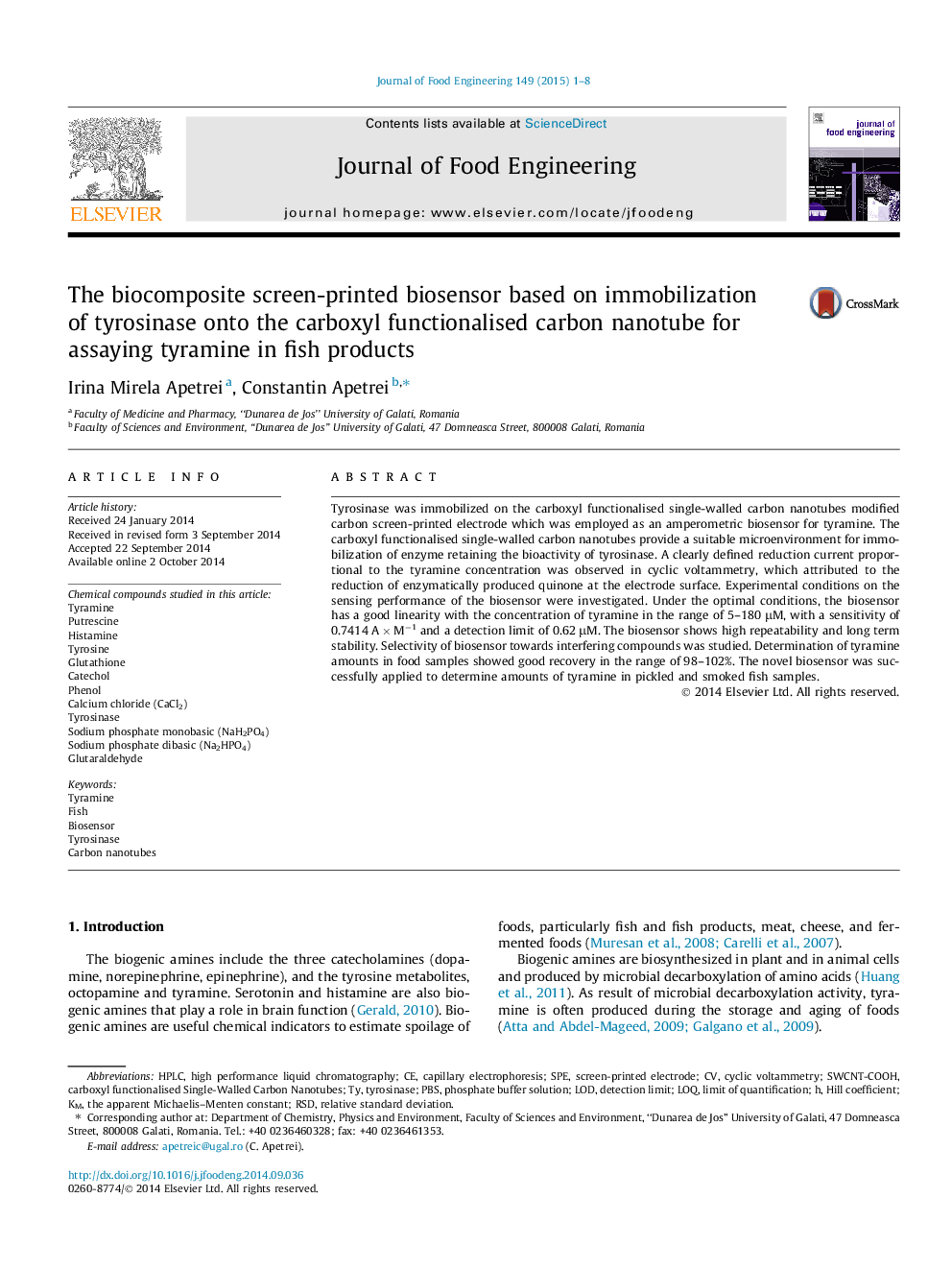| Article ID | Journal | Published Year | Pages | File Type |
|---|---|---|---|---|
| 222948 | Journal of Food Engineering | 2015 | 8 Pages |
•Based on tyrosinase and SWCNT–COOH, the novel biosensor for determination of tyramine is developed.•The linearity range regarding tyramine content is 5–180 μM.•The detection limit is 0.62 μM and the response time is 8 s.•The tyramine content in fish products can be successfully determined.
Tyrosinase was immobilized on the carboxyl functionalised single-walled carbon nanotubes modified carbon screen-printed electrode which was employed as an amperometric biosensor for tyramine. The carboxyl functionalised single-walled carbon nanotubes provide a suitable microenvironment for immobilization of enzyme retaining the bioactivity of tyrosinase. A clearly defined reduction current proportional to the tyramine concentration was observed in cyclic voltammetry, which attributed to the reduction of enzymatically produced quinone at the electrode surface. Experimental conditions on the sensing performance of the biosensor were investigated. Under the optimal conditions, the biosensor has a good linearity with the concentration of tyramine in the range of 5–180 μM, with a sensitivity of 0.7414 A × M−1 and a detection limit of 0.62 μM. The biosensor shows high repeatability and long term stability. Selectivity of biosensor towards interfering compounds was studied. Determination of tyramine amounts in food samples showed good recovery in the range of 98–102%. The novel biosensor was successfully applied to determine amounts of tyramine in pickled and smoked fish samples.
